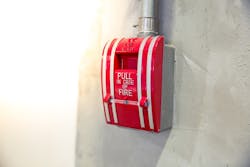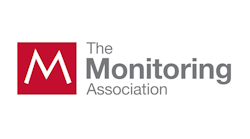Alarm industry continues its fight against NFPA 72 changes
Last week, members of the alarm industry personally appeared before the National Fire Protection Association’s (NFPA) Standards Council as part of a last ditch effort to appeal denial of a change to a section within NFPA 72 that would essentially require privately-owned and operated NRTL-listed central monitoring stations to gain approval from local municipalities in order to receive fire alarm signals.
According to Jay Hauhn, Executive Director and CEO of The Monitoring Association, this battle began in 2013 when terminology within Section 26.5.3.1.3 of NFPA 72 was modified to say that a Nationally Recognized Testing Laboratories (NRTL)-listed central supervising station requires the approval of an Authority Having Jurisdiction (AHJ) in order to receive alarm signals. However, the code as currently written allows for remote stations, which are not required to meet the stringent standards of NRTL-listed central stations, to receive alarms signals.
“The requirements to be a remote station are minimal, whereas being a listed central supervising station the requirements are significant and you have to be approved by Underwriters Laboratories (UL) to be that,” Hauhn explains. “We know of nowhere else in any NFPA code where a service that exceeds a lesser standard is specifically called out as needing special approval.”
In a letter to NFPA Standards Council Secretary Dawn Michele Bellis, TMA Standards Chair and Vector Security VP of Technical Services Richard Simpson also called the validity of the changes into question.
“NFPA allowing standards language that disregards a core competency of the crucial NRTL function establishes a destabilizing precedent,” wrote Simpson.
A Back and Forth Battle
The alarm industry came out in full force to oppose the code changes when they were originally proposed in 2013 and have been engaged in a back and forth battle primarily with the NFPA’s fire service members ever since.
Hauhn says the roots of this struggle stem from the alarm industry’s ongoing battle with several municipalities in Illinois that have sought to establish their own central monitoring stations and cut the private monitoring industry completely out of the picture. Although the courts have predominantly come down on the side of the private sector in much of this litigation, many cities and their fire service leaders remain steadfast in their desire to operate their own monitoring centers.
In 2015, the alarm industry was successful in getting the code language reverted back to the original version which read, “Alarm, supervisory, and trouble signals shall be permitted to be received at a listed central supervising station,” without adding the prerequisite, “When permitted by the Authority Having Jurisdiction.” However, in 2016 at the NFPA’s annual conference, which just so happened to be held in Chicago, Hauhn says there was a large contingent of fire professionals that showed up to defeat the industry language change amendment once again.
“There are people who say The Monitoring Association is trying to fix a local issue in the national code, but if you don’t know the history, you could say, ‘yeah, they’re trying to correct what is going on in Chicago in a national code.’ The fact is this was put in the national code in 2013 to fix a local issue, so we’re just trying to override what they did by putting a local issue in a national code,” Hauhn adds.
During the Technology Meeting at this year’s NFPA conference in Las Vegas, the industry’s amendment, known as Certified Amending Motion (CAM) 72-6, was overwhelming approved once again. But when the amendment was sent back to the NFPA Technical Committee, which requires a two-thirds majority for final passage, it was subsequently rejected.
“It’s really ridiculous because what you’re asking is all of the members of the Technical Committee to agree that they were wrong in the first place,” Hauhn says.
Simpson also questioned the fairness of the process in his appeal letter along as well as the personal biases of some of the members of the Supervising Station Fire Alarm and Signaling Systems Technical Committee (SIG-SSS TC).
“Also with respect to fairness, we believe that despite a claim of balance, there is overwhelming evidence that the SIG-SSS TC consists of an unfair number of members who have a vested interest that is not related to life-safety, in defeating this CAM,” he wrote.
Hauhn says they should know the Standards Council’s decision on the amendment by the end of the August and that their decision on the matter will be final.
About the Author:
Joel Griffin is the Editor-in-Chief of SecurityInfoWatch.com and a veteran security journalist. You can reach him at [email protected].






